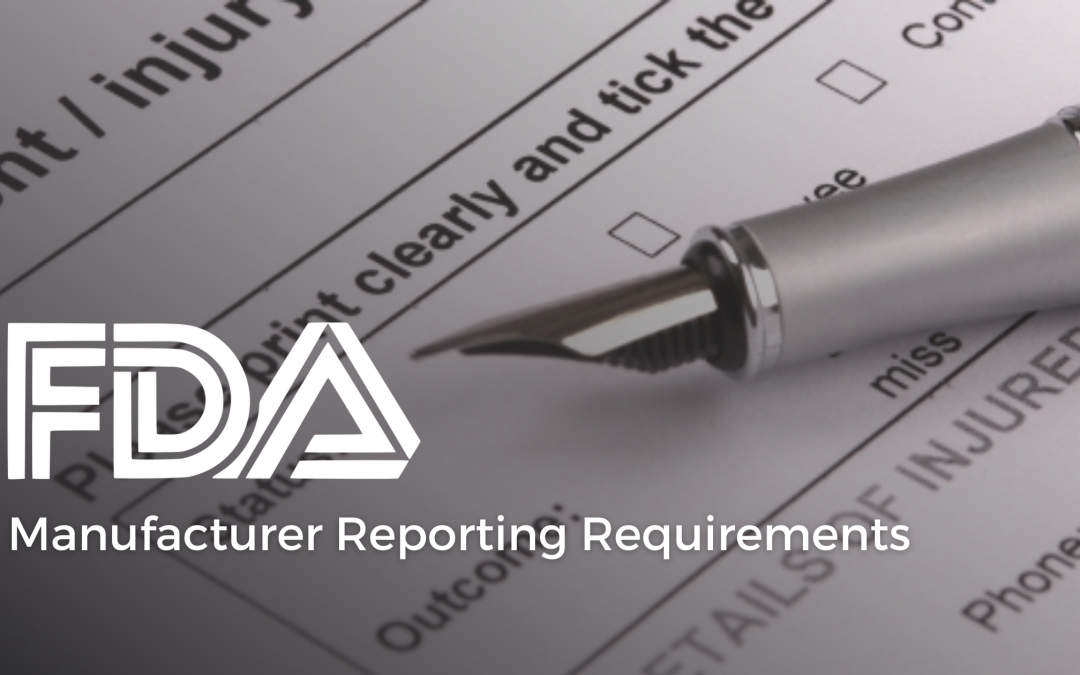The Food and Drug Administration (FDA or the Agency), the US regulating authority in the sphere of medical devices, has published a guidance document dedicated to the medical device reporting requirements for manufacturers.
The document provides an overview of the key concepts associated with reporting incidents associated with medical devices and also clarifies the regulatory requirements related to mandatory reporting the medical device manufacturers shall comply with.

Table of Contents
Due to its legal nature, the FDA guidance does not introduce new rules or requirements itself but provides additional recommendations to be considered by parties involved. Additionally, the authority mentions that an alternative approach could be applied, however, such an approach should meet the current regulatory requirements and be discussed with and approved by the FDA in advance.
Medical Device Reporting: Basics
The present guidance is intended to provide additional information and clarifications regarding the reporting and record-keeping requirements medical device manufacturers should comply with. The appropriate requirements are prescribed by the Medical Device Reporting (MDR) regulation, 21 CFR Part 803. In this context, the document also refers to section 519 of the Federal Food, Drug, and Cosmetic (FD&C) Act.
The aforementioned regulation is intended to introduce mechanisms necessary to effectively identify and monitor incidents associated with medical devices in order to mitigate risks and correct issues within the shortest possible period of time. The authority also mentions that the appropriate regulations are supported by enforcement mechanisms introduced by the FD&C Act, such as seizures, injunctions, penalties, and even criminal prosecution. The scope of reporting requirements covers not only medical device manufacturers but also other parties involved in operations with medical devices, such as healthcare institutions, importers, and distributors – all these parties shall comply with the applicable requirements on reporting and record-keeping.
The main requirements medical device manufacturers shall follow are:
- To submit reports to the FDA, in case the incident meets the applicable reporting criteria;
- To implement efficient procedures ensuring that all significant adverse events associated with medical devices would be duly identified and evaluated;
- To keep all important information related to complaints regarding the products they are responsible for.
In order to assist medical device manufacturers and other parties involved in applying the rules described herein, the present FDA guidance also provides additional criteria to be used to determine whether the particular incident is subject to reporting. According to the document, any incident in which a medical device placed on the market has caused or contributed to serious injury, or has had a malfunction that could result in similar consequences, should be reported to the FDA without undue delay. It is important to mention that the scope of the present guidance covers only the requirements applicable for medical device manufacturers, not the other parties such as healthcare facilities or importers. However, such requirements are also described in brief in order to assist medical device manufacturers in establishing the proper processes of information exchange. The manufacturing activities carried out by parties other than medical device manufacturers also fall outside the scope of the present document.
Manufacturer Reporting Requirements
As mentioned, medical device manufacturers are obliged to submit reports on incidents resulting in serious injury, or malfunctions in normal operations associated with medical devices for which they are responsible. Such a report should be based on the information received by the manufacturer from other parties involved in operations with medical devices. Under the general rule, a report regarding the incident in question should be submitted by the medical device manufacturer not later than in 30 calendar days from the date information about the incident was communicated or became available in any other way to the manufacturer. However, in certain cases, the manufacturer will have to submit a report within 5 business days from the date it becomes aware of the reportable incident. According to the Food and Drug Administration Amendments Act 2007 (FDAAA) the reporting rules for Class I medical devices, as well as certain Class II medical devices (ones that are not implantable or used as life-supporting or life-sustaining) were changed, and incidents associated with such devices were subject to quarterly reporting. Nevertheless, at a later stage, the Agency explicitly stated that such devices should still remain subject to general reporting rules. Thus, all incidents and malfunctions associated with such low-risk devices should be reported in accordance with the standard procedure and timeframes.
The document also describes the steps the Agency will to take in order to improve the existing framework for adverse events reporting. For instance, the authority will to publish a list of types of medical devices that will remain subject to 30-day reporting. Additionally, the FDA intends to clarify the scope of malfunctions associated with medical devices that could be reported on a quarterly basis. Thus, the applicable rules and requirements are in the process of continuous development and improvement, so the Agency reserves the right to amend its recommendations accordingly.
In order to ensure the reporting requirements are followed by all responsible parties, the FDA also outlines the scope of criteria to be applied when determining whether the particular entity should be considered as a medical device manufacturer for the purpose of regulations on adverse event reporting. Under the general rule, a “manufacturer” stands for any person who manufactures, prepares, propagates, compounds, assembles, or processes a device by chemical, physical, biological, or other procedure. The appropriate definition is set forth by regulation 21 CFR 803.3.
In particular, the scope of the aforementioned definition covers those who:
- Not only distributes the device, but also makes changes to its package or labeling;
- Develops specifications that will be used by another party directly manufacturing the device, while later the device will be distributed by the requesting party;
- Manufactures components or accessories that are medical devices and that are (1) ready to be used and are intended to be commercially distributed and intended to be used as is, or (2) processed by a licensed practitioner or other qualified person to meet the needs of a particular patient.
According to the applicable regulations – the MDR – any and all medical device manufacturers placing their products on the US market are obliged to comply with the reporting requirements. This rule applies to both local and foreign medical device manufacturers. Moreover, if a medical device manufacturer based in the US exports its products abroad without marketing them in the US, it should still comply with the aforementioned requirements.
In summary, the present guidance describes the applicable regulatory requirements with regard to incident reporting and record-keeping the medical device manufacturer shall follow. The document highlights the most important aspects associated thereto, including the reporting timelines and the scope of incidents with medical devices subject to reporting.
Sources:
How Can RegDesk Help?
RegDesk is a next-generation web-based software for medical device and IVD companies. Our cutting-edge platform uses machine learning to provide regulatory intelligence, application preparation, submission, and approvals management globally. Our clients also have access to our network of over 4000 compliance experts worldwide to obtain verification on critical questions. Applications that normally take 6 months to prepare can now be prepared within 6 days using RegDesk Dash(TM). Global expansion has never been this simple.


